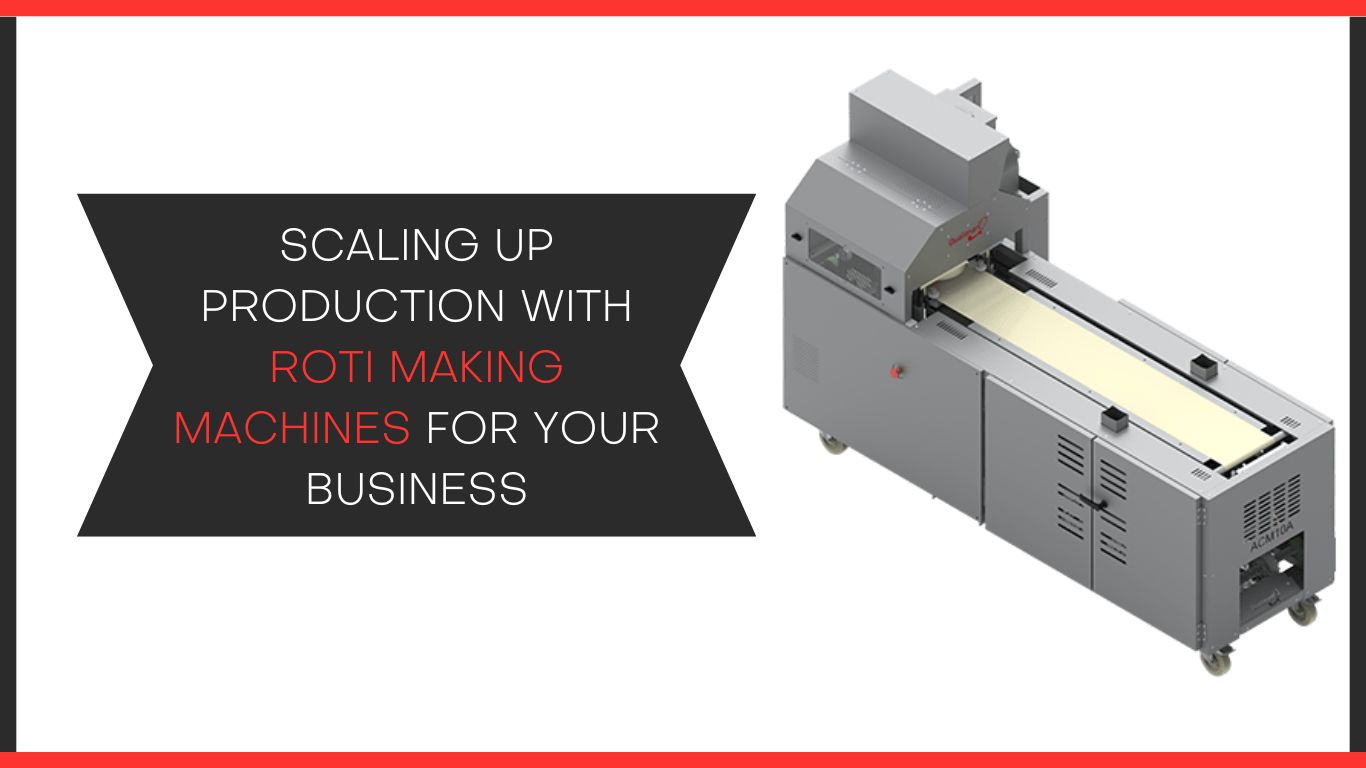For small businesses, finding ways to increase production while maintaining quality is crucial for growth. In this blog post, we’ll explore how roti making machines offer a solution to this challenge, making it easier for businesses to meet demand and expand their operations. Whether you’re a restaurant owner, caterer, or food entrepreneur, understanding the benefits of roti making machines can revolutionise your business.
Understanding roti making machines and their functionality
Roti making machines are like helpers in the kitchen that make the process of making rotis easier and faster. They work by automating the steps involved in making rotis, like rolling and cooking. These machines usually have a conveyor belt or rollers where the dough is placed. Then, the machine flattens the dough into thin circles and cooks them quickly. Some machines even have settings to adjust the thickness and cooking time to get the perfect roti. Basically, they take over the manual work of making rotis, saving time and effort. So, instead of making each roti by hand, you can use a roti making machine for small business to make many rotis at once, making it great for small businesses looking to increase production.
Key considerations before investing in a roti making machine
- Cost Analysis: Compare the initial investment in a roti making machine with potential long-term savings on labour and production costs.
- Space Requirements: Evaluate the space available in your kitchen or production area to ensure the machine fits and allows for efficient workflow.
- Maintenance Needs: Consider the maintenance and servicing requirements of the machine, including cleaning and repairs.
- Compatibility: Check if the machine is compatible with your existing kitchen equipment and production processes.
- Production Volume: Assess your production needs and volume requirements to choose a machine that can meet your demand effectively.
Implementing Roti Making Machines in Small Businesses
Roti making machines can make your small business more efficient and help you produce more rotis in less time. Here are some simple steps to implement these machines in your small business –
- Research and Choose the Right Machine: Look for roti making machines that fit the size and needs of your business. Consider factors like capacity, size, and budget before making a decision.
- Arrange Space: Find a suitable area in your kitchen or workspace to place the roti making machine. Make sure there’s enough room for the machine to operate smoothly and for workers to access it comfortably.
- Training for Employees: If you have employees, provide them with training on how to use the roti making machine properly. This ensures that they can operate it safely and efficiently.
- Follow Instructions: Read the instruction manual that comes with the machine carefully. Follow the manufacturer’s guidelines for setup, operation, and maintenance to ensure the machine functions correctly and lasts longer.
- Prepare Ingredients: Before using the machine, make sure you have all the ingredients needed to make rotis, such as flour, water, and any other additives. Keep these ingredients stocked to avoid interruptions during production.
- Adjust Settings: Most roti making machines come with adjustable settings for thickness, size, and cooking time. Experiment with these settings to find the right combination that produces the desired results for your rotis.
- Monitor Production: Keep an eye on the production process initially to ensure everything runs smoothly. Check the quality of the rotis being produced and make any necessary adjustments to the machine settings.
- Maintain and Clean Regularly: Regular maintenance is crucial for keeping the roti making machine in good condition. Clean it regularly according to the manufacturer’s instructions to prevent buildup of residue and ensure hygienic production.
- Evaluate Performance: Periodically evaluate the performance of the roti making machine and its impact on your business. Assess factors like production output, cost savings, and customer satisfaction to determine its effectiveness.
By following these simple steps, you can successfully implement roti making machines in your small business and enjoy the benefits of increased efficiency and productivity.
Future Trends and Innovations
In the future, we can expect even more advancements in roti making machines. They might become even easier to use and more efficient. New features could include smart technology that helps with dough preparation or automatic cleaning. These innovations could make roti production even faster and more convenient for small businesses.
Final Words
Using roti making machines can truly transform your small business as not only do they boost production, but they also save time and effort. Remember, investing in the right machine tailored to your needs can be a game-changer. Here’s to your success in expanding your business with roti making machines!

